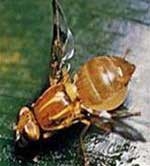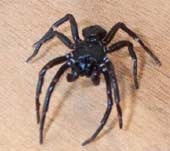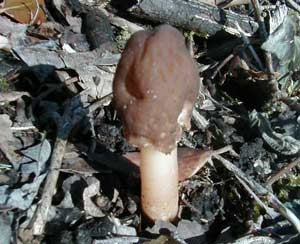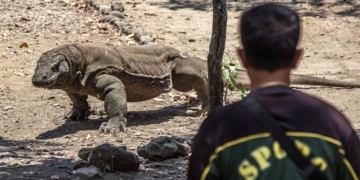The fig mentioned in this article refers to the sweet variety commonly known as the American fig. These figs are large, and when fully ripe, they become very soft and sweet, making them a favorite fruit among many people.
Typically, unripe figs do not contain insects inside. However, ripe figs often have living insects within them. So how do these insects get inside the figs, and what kind of insects are they?
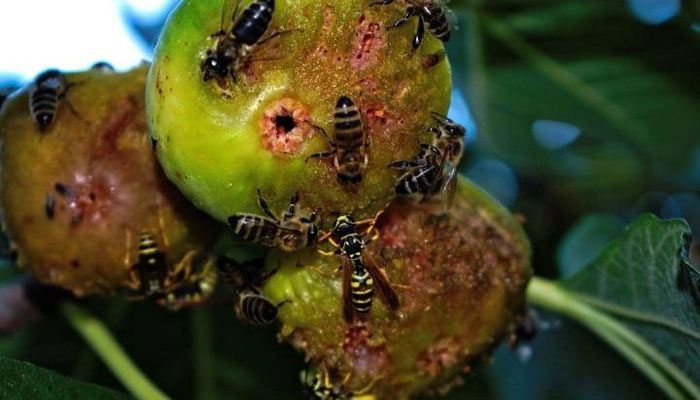
Many people wonder how insects get inside figs. (Image: The Splendid Table).
What Insects Are Inside Figs?
The most common insect found inside figs is the wasp (also known as fig wasp). Figs and fig wasps rely on each other for survival and growth. Although figs are generally considered a type of fruit, they are actually inverted flowers, with the fruit’s flesh acting as the receptacle.
For reproduction, the flowers must be pollinated, but since the fig flowers are hidden within the fruit itself, the wasps must crawl inside the figs to deliver pollen directly to the flowers. Inside the fig flowers is where the female wasp lays her eggs.
The relationship between figs and fig wasps is mutually beneficial—both species need each other to reproduce and thrive. In biology, this relationship is known as mutualism, where two species positively influence each other.
How Do Insects Get Inside Figs?
The fig tree produces male figs with pollen and female figs. Since the fig flowers bloom inside the fruit, they cannot be pollinated by wind and instead rely on insects for this task.
The wasps crawl into both male and female figs in an attempt to reproduce. They enter the figs through a narrow opening known as the ostiole.
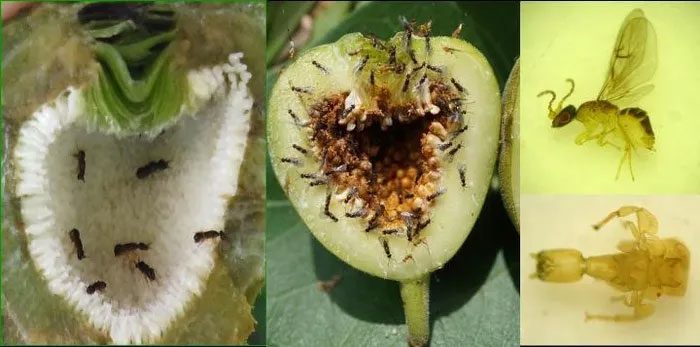
A wasp enters the fig through a narrow opening called the ostiole. (Image: EurekAlert).
The female wasp lays her eggs inside the fig. The male wasp, which cannot fly, exists solely to mate and to create a pathway for the offspring to escape.
The emerging young wasps carry pollen with them as they search for a new fig flower, continuing the cycle established by their parents. This process is how fig flowers get pollinated.
The parent wasps cannot escape after entering the fig. The process of squeezing through the narrow ostiole to reproduce and creating a path for the offspring to escape often results in the loss of their antennae and wings. They die inside the fig, which answers the question of how insects get inside figs.
Sometimes, the parent insects may still be alive when we eat the figs. Occasionally, you might even find young wasps that have not yet escaped. The reason for this is that the pathway created by the insects to enter the fig becomes constricted, similar to a healing process. The new path excavated for the next generation of wasps might just appear as you cut open the fig.
Can you eat figs that contain insects inside? Thanks to the wasps pollinating the flowers, we enjoy delicious figs. You only need to remove any visible insects when eating figs; if you don’t remove all of them, it does not significantly affect your health.








































